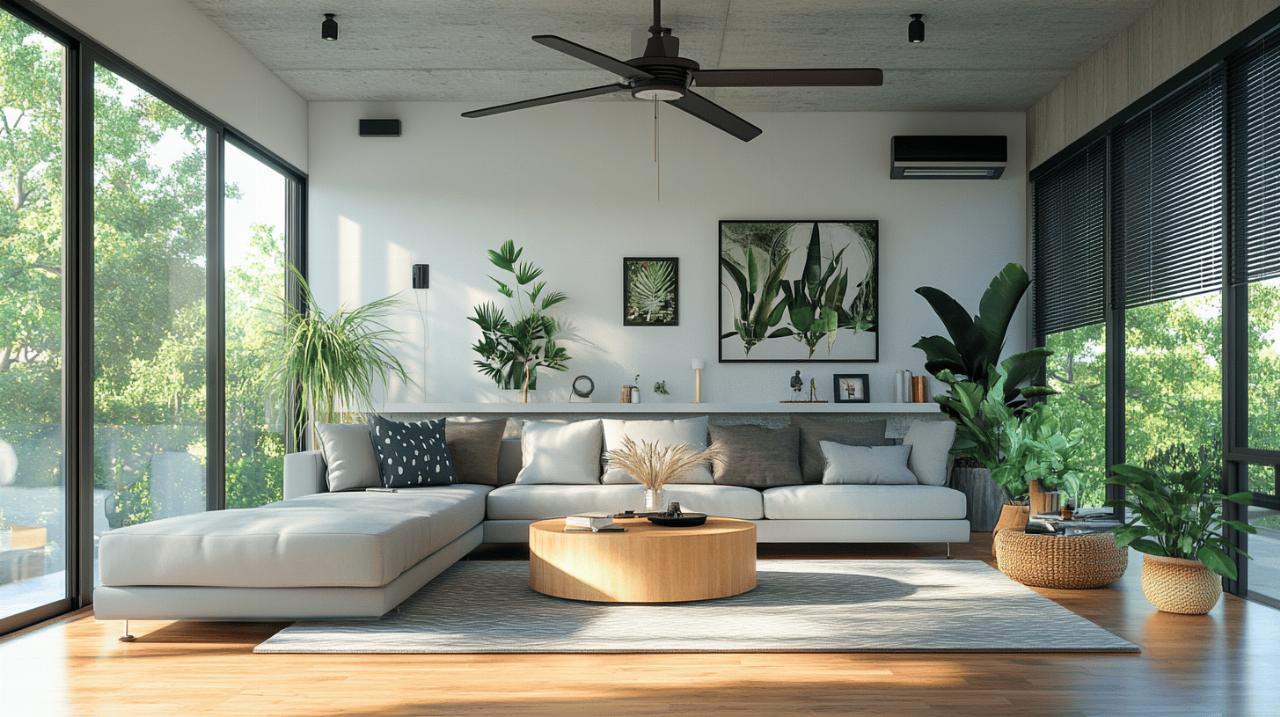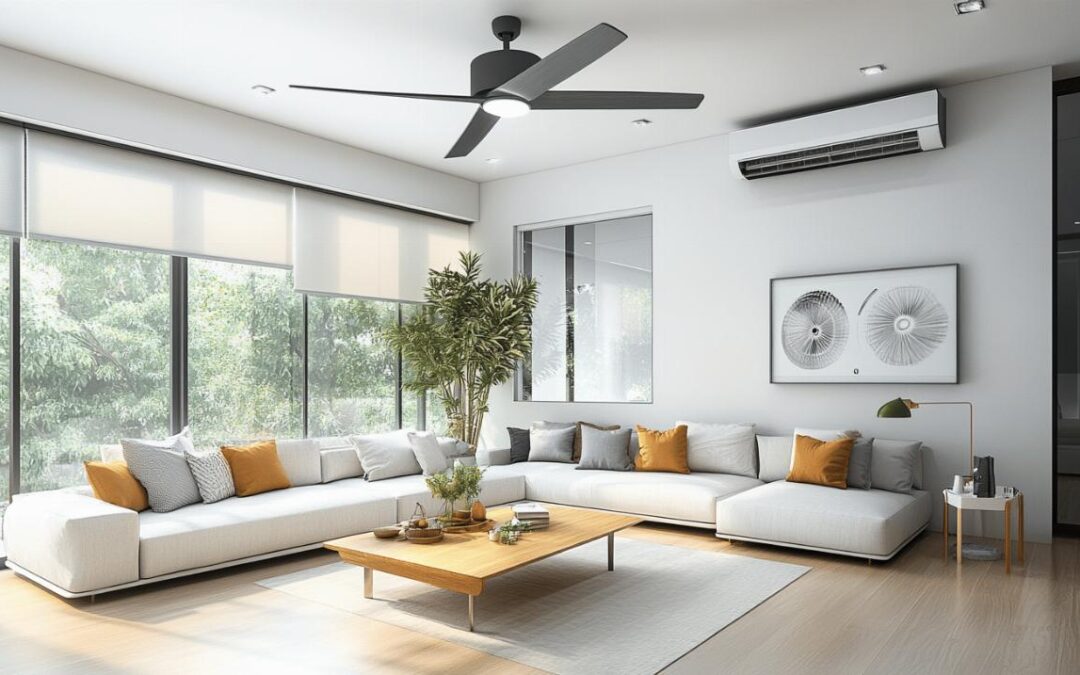As temperatures rise during summer months, finding effective ways to keep your home cool without relying on air conditioning becomes essential for both comfort and managing energy costs. While air conditioning provides immediate relief, it significantly increases electricity bills and environmental impact. Fortunately, numerous traditional and innovative methods exist to maintain a comfortable home environment even during the hottest days. The following comprehensive guide offers practical solutions that combine time-tested wisdom with modern approaches to heat management.
Strategic use of fans
Fans represent one of the most cost-effective cooling solutions available. According to Casa Jedo experts, a fan costs only 15p to 31p for 24 hours of continuous use, compared to air conditioning which can cost between £4.84 to £6 for the same duration. This remarkable difference makes understanding fan optimization crucial for summer comfort.
Cross-ventilation techniques
Creating effective airflow throughout your home requires strategic thinking about air movement patterns. Position fans near windows on the cooler sides of your house, typically the north or east-facing windows. This setup draws cooler outside air in while pushing warmer indoor air out through windows on the opposite side of your home. For optimal results, create a pathway for air to travel unobstructed through your living spaces.
Creating cooling air currents
Beyond basic ventilation, you can enhance the cooling effect of fans with simple modifications. Placing a shallow bowl of ice or a frozen water bottle in front of a fan creates a makeshift evaporative cooler as the air passes over the cold surface. For ceiling fans, ensure they rotate counterclockwise during summer, which pushes air downward creating a wind-chill effect that makes you feel cooler without actually lowering the room temperature.
Window management for temperature control
Windows function as your home’s thermal gateways, making their management crucial for temperature regulation during hot weather. Proper window strategies can significantly reduce indoor temperatures without any energy expenditure.
Timing window openings for maximum cooling
The timing of when you open and close windows makes a substantial difference in home temperature. Open windows during early morning and evening hours when outside temperatures drop below indoor levels. Close them before the day heats up, typically by mid-morning, to trap the cooler air inside. In many regions, nighttime temperatures fall significantly, creating an opportunity to flush your home with cool air overnight, then sealing it in for the following day.

Using curtains and blinds effectively
Window coverings serve as your first defense against solar heat gain. Light-colored, tightly woven curtains can reflect sunlight away from your home, while thermal or blackout curtains provide additional insulation. For maximum effectiveness, keep curtains and blinds closed on sun-facing windows during peak daylight hours. South and west-facing windows typically receive the most intense sun exposure and should be prioritized for covering. Consider exterior solutions like awnings or shutters which block heat before it reaches the window glass.
Home modifications for heat reduction
Several structural and material modifications can significantly enhance your home’s ability to resist heat penetration, providing longer-term solutions to summer cooling challenges.
Heat-reflective window films and materials
Modern window films offer an accessible way to reduce solar heat gain without sacrificing natural light. These transparent or lightly tinted films can block up to 99% of UV rays and significantly reduce infrared heat transmission. Installation is relatively straightforward and provides immediate benefits. For more permanent solutions, consider reflective roofing materials that bounce sunlight away from your home rather than absorbing it, which can reduce attic temperatures by up to 30 degrees.
Proper insulation techniques
While typically associated with winter warmth, good insulation works year-round by preventing heat transfer in either direction. Focus on attic insulation since heat rises and most solar gain occurs through the roof. Weather-stripping doors and windows prevents warm air infiltration during hot days. For older homes with poor insulation, even temporary measures like hanging heavy fabrics on exterior walls can provide some thermal buffering against outside heat.
Heat-free cooking methods
Cooking represents a major source of indoor heat that’s often overlooked. Traditional ovens and stovetops can raise kitchen temperatures significantly, affecting the entire home’s comfort level.
No-cook meal ideas
Summer presents the perfect opportunity to explore meals that require minimal or no heat preparation. Fresh salads combining seasonal vegetables with proteins like beans, nuts, or pre-cooked meats provide nutritious options. Cold soups such as gazpacho or cucumber yogurt soup offer refreshing alternatives to hot dishes. Sandwiches, wraps, and grain bowls assembled with pre-cooked components satisfy hunger without generating additional heat in your living space.
Outdoor cooking alternatives
When hot meals are desired, moving cooking activities outside prevents heat buildup indoors. Grilling represents the classic solution, but solar cookers, portable induction burners on a patio table, or even electric pressure cookers used in well-ventilated areas can help maintain cooler indoor temperatures. Consider establishing a summer kitchen area on a covered porch or patio for regular meal preparation during the hottest months.
Personal cooling strategies
Sometimes the most effective approach involves cooling your body directly rather than attempting to cool your entire living space.
Cool bathing routines
Adjusting bathing habits provides immediate relief during hot weather. Tepid showers rather than cold ones actually provide better cooling as they allow blood vessels to remain open, facilitating heat release from the body. Wetting pulse points at wrists, neck, elbows, groin, ankles, and behind the knees with cool water can rapidly lower body temperature. For sleeping comfort, a damp towel placed on the body with a fan blowing across it creates an effective cooling system.
Hydration and body temperature regulation
Proper hydration plays a critical role in your body’s ability to regulate temperature. Drink water consistently throughout the day rather than waiting until you feel thirsty. Consuming foods with high water content like watermelon, cucumber, and citrus fruits contributes to hydration while providing refreshment. Avoid excessive alcohol and caffeine which can contribute to dehydration. Wearing loose-fitting, light-colored clothing made from natural fibers like cotton and linen allows better air circulation around your body and moisture evaporation.
Bedroom cooling solutions
Quality sleep becomes challenging during hot weather, making bedroom cooling particularly important for overall wellbeing during summer months.
Selecting appropriate bedding materials
Switch to lightweight, natural fiber bedding during summer months. Cotton percale sheets offer better breathability than sateen weaves, while linen provides excellent moisture-wicking properties. Consider a buckwheat hull pillow which doesn’t retain heat like synthetic options. For the most challenging nights, cooling gel pads placed under sheets or pillows provide targeted relief without electricity usage.
Creating a sleep-friendly cool environment
Transform your bedroom into a cooling sanctuary by removing unnecessary electronics that generate heat. Position a fan to blow across your bed, ideally creating cross-ventilation with a window if nighttime temperatures permit. Keep bedroom doors open when possible to allow better air circulation throughout your sleeping area. Consider sleeping on lower floors where temperatures naturally remain cooler due to heat’s tendency to rise.
Landscaping for natural cooling
The environment immediately surrounding your home significantly impacts its internal temperature. Strategic landscaping provides natural cooling benefits while enhancing your property’s appearance and value.
Strategic tree and shrub placement
Deciduous trees planted on the south and west sides of your home provide summer shade while allowing winter sunlight after leaf drop. Calculate sun angles to ensure trees will cast shadows on walls and windows during peak heat hours. Fast-growing varieties like poplar and maple can provide benefits within just a few years. For immediate impact while waiting for trees to mature, consider installing trellises with climbing vines that create shade walls during summer months.
Plant selections for shade maximization
Beyond trees, various plants contribute to cooling effects around your home. Ground covers reduce reflected heat compared to hard surfaces like concrete or stone. Living walls or vertical gardens on sun-exposed sides of your home provide insulation while cooling through evapotranspiration. For small spaces, container gardens strategically placed near windows can provide localized cooling and shade benefits while enhancing your home’s aesthetic appeal and potentially providing edible harvests.










